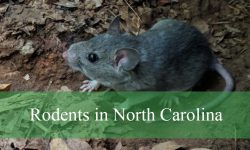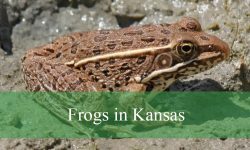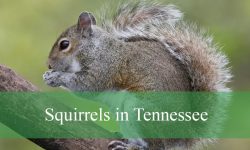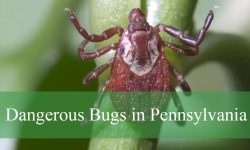If you live in Iowa, you have probably noticed that ants are among the most common insects found in both urban and rural areas. Most species are harmless, but a few can bite or sting when disturbed. These ants can cause mild pain, skin irritation, or allergic reactions, especially for those who encounter them frequently around homes or gardens.
Learning to recognize the biting ants of Iowa is important for keeping your living spaces safe and comfortable. Each species has unique features, nesting habits, and levels of aggression that can help you identify and manage them correctly. Understanding their behavior also makes it easier to prevent infestations before they start.
Iowa’s climate and diverse landscapes support several types of biting ants that thrive in fields, woodlands, and even inside buildings. In this article, you will discover ten common biting ants found across the state, along with detailed identification tips, behaviors, and advice for dealing with them safely.
Types of Biting Ants Found in Iowa
Carpenter Ant (Camponotus pennsylvanicus)
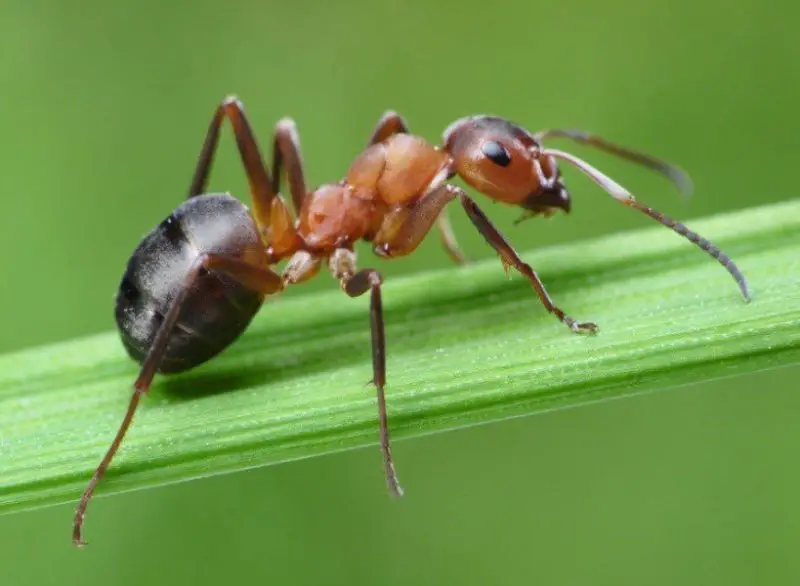
The Carpenter Ant is one of the largest and most recognizable ant species in Iowa, known for its smooth black body and powerful jaws. Adults typically measure between 6 to 13 millimeters in length, with queens reaching up to 17 millimeters. Their large size, rounded thorax, and evenly segmented body make them easy to distinguish from other ants commonly found in homes and wooded areas.
Carpenter ants do not eat wood but excavate it to build their nests, creating smooth tunnels within moist or decaying timber. They prefer damp environments such as fallen logs, rotting tree stumps, or structural wood softened by water damage. Inside homes, they often nest behind walls or under floors near bathrooms and kitchens.
These ants are mostly nocturnal, foraging for food at night in long, organized trails. They feed on sweets, insects, and sometimes pet food. While they are not aggressive, Carpenter ants can bite if handled or if their nests are disturbed. Their bites are strong enough to pinch the skin but rarely cause lasting harm.
Carpenter ants do not have venom or stingers, so their primary risk comes from structural damage to wooden parts of homes rather than from bites. However, the bites can cause mild pain or irritation. Controlling moisture and sealing entry points are the best ways to prevent infestations.
Pavement Ant (Tetramorium immigrans)
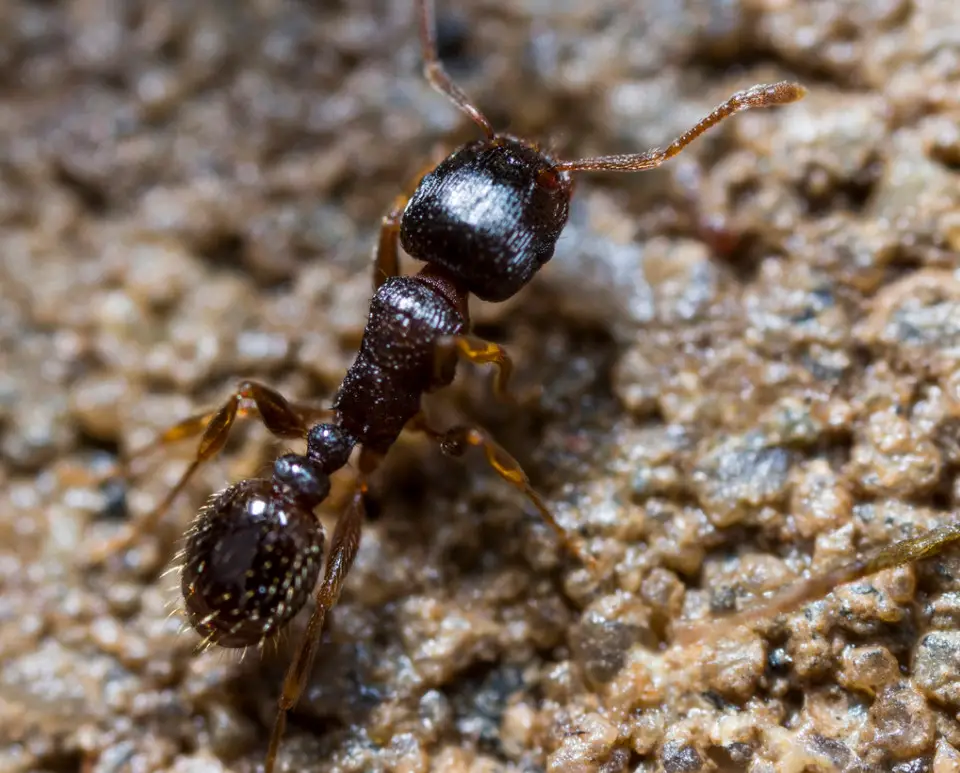
The Pavement Ant is a small, dark brown to black species that commonly nests under sidewalks, driveways, and foundations. Workers measure about 2.5 to 4 millimeters long and have two small spines on their thorax, which help identify them under magnification. Their antennae have 12 segments with a distinct 3-segmented club at the tip.
These ants prefer urban and suburban environments where they can find shelter beneath cracks in concrete or pavement. They are often seen pushing out piles of fine soil or sand around their nest entrances. Indoors, they search for crumbs, grease, or sugary substances, often invading kitchens and basements during warm months.
Pavement ants are not aggressive toward humans but are territorial toward other ant colonies. When threatened, they may bite defensively, though their small mandibles make bites barely noticeable. Their most distinctive behavior is forming large swarms and engaging in fierce ant-to-ant battles during summer.
Although Pavement ants do not have venom and pose no medical danger, their persistent presence in homes can be bothersome. Good sanitation and sealing foundation cracks can effectively reduce their infestations around homes and buildings.
Field Ant (Formica species)
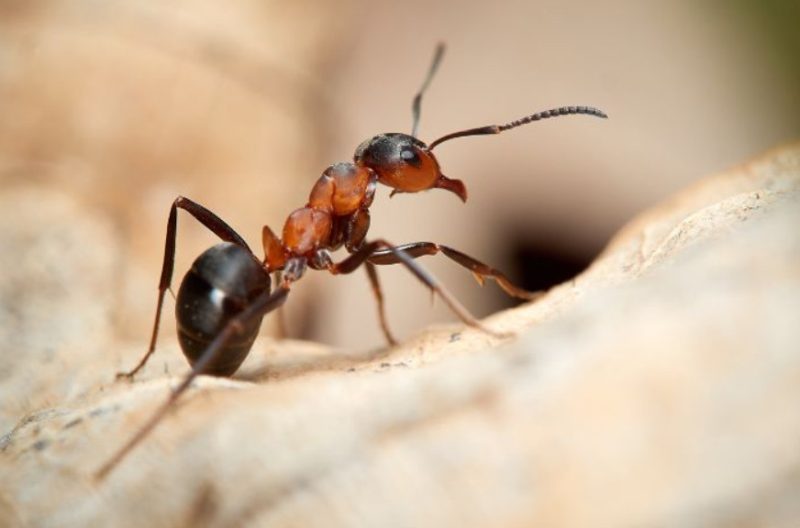
Field Ants are among the most common outdoor ants in Iowa, thriving in open areas such as lawns, pastures, and forest edges. They are medium to large in size, usually ranging from 4 to 8 millimeters long, and their colors vary from black and brown to reddish-orange combinations. Their segmented bodies and shiny exoskeletons make them easy to spot while foraging in open sunlight.
These ants build large, dome-shaped mounds out of soil, grass, or twigs. They prefer dry, sunny locations and rarely invade homes. Field ants are active during the day, feeding on honeydew from aphids, small insects, and plant material. They play a beneficial ecological role by aerating soil and controlling pest populations.
Field ants can bite if their nests are disturbed, and they release formic acid into the wound, which can cause a burning sensation. While the bite is mildly painful, it does not cause serious harm or allergic reactions in most people. Their bites are defensive, not predatory.
Because Field ants don’t live indoors, they are rarely considered household pests. However, their large nests can become unsightly in lawns or gardens. Managing them typically involves removing the mounds or applying outdoor-safe ant treatments when necessary.
Thief Ant (Solenopsis molesta)
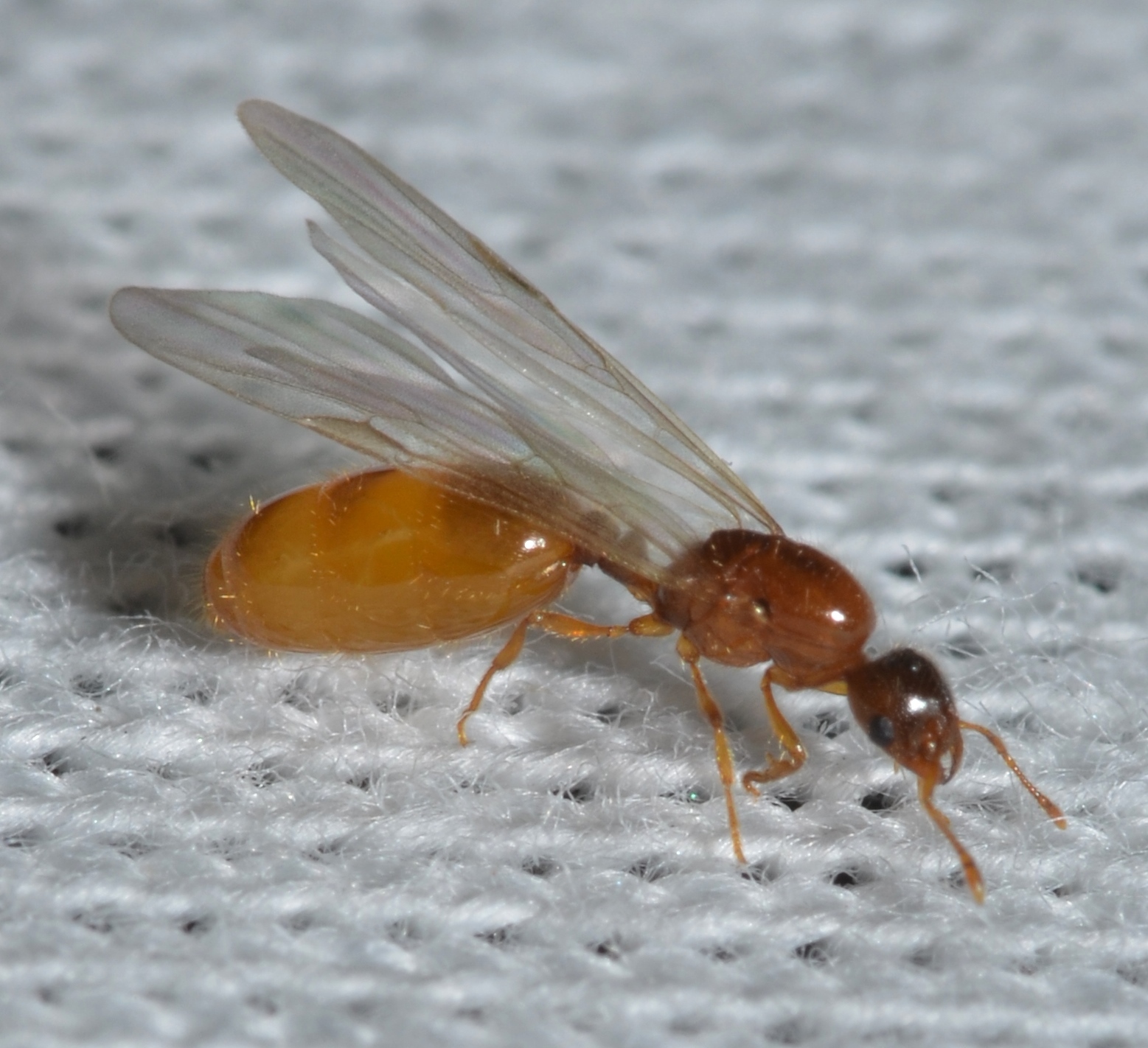
Thief Ants, also known as Grease Ants, are tiny yellow to light brown ants measuring only 1.5 to 2.2 millimeters long. Their small size allows them to enter even the tiniest cracks and openings in walls, floors, and food containers. They are often confused with Pharaoh ants but can be differentiated by their smaller size and two-segmented waist.
These ants get their name from their habit of nesting close to other ant colonies and stealing food or larvae from them. Thief ants prefer warm, dry environments and often invade homes in search of oily or protein-rich foods such as meat, cheese, and peanut butter. They are active throughout the summer and may nest indoors during colder months.
Despite their size, Thief ants can bite if disturbed, though their bites are too weak to penetrate human skin deeply. They do not sting but can cause contamination issues since they forage in unsanitary areas such as trash bins or dead insects before entering kitchens. Their presence is often a sign of nearby food sources or cracks in the foundation.
Thief ants do not possess venom, so they are not medically harmful. However, because they can transport bacteria, they pose a minor hygiene risk in food storage areas. Good cleaning practices and sealing entry points are essential for preventing infestations.
Odorous House Ant (Tapinoma sessile)
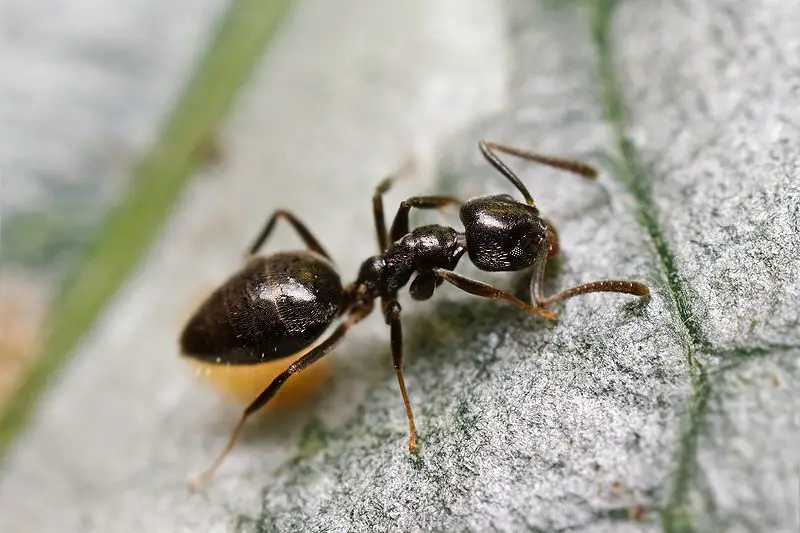
The Odorous House Ant is one of the most widespread indoor ant species in Iowa. These ants are small, ranging from 2.4 to 3.3 millimeters long, and dark brown to black in color. When crushed, they emit a distinct rotten coconut or blue cheese odor, which gives them their name. Their bodies have a single, hidden node between the thorax and abdomen, distinguishing them from other small house ants.
These ants nest both indoors and outdoors, often under rocks, mulch, floorboards, or behind walls. They thrive in moist environments, especially near leaky pipes or damp wood. Colonies can contain thousands of workers and multiple queens, making them difficult to eliminate completely.
Odorous House Ants are not aggressive, but they can bite weakly when handled. Their bites are harmless and do not cause pain or swelling. They feed on sweets, dead insects, and household scraps, foraging in long trails across countertops and floors. Their activity usually increases after rain when their outdoor nests flood.
Although they lack venom and do not sting, Odorous House Ants are a significant nuisance due to their persistent infestations and unpleasant odor. Keeping kitchens dry and food sealed, along with using bait traps, helps manage their populations effectively indoors.
Acrobat Ant (Crematogaster species)
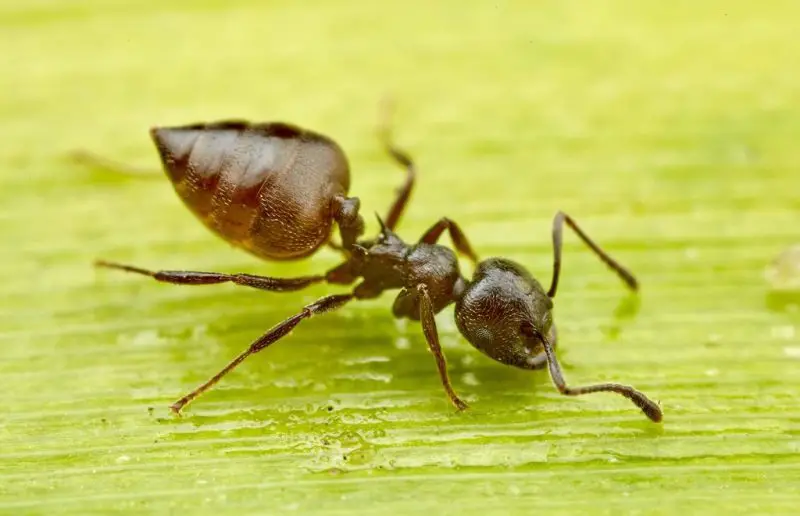
The Acrobat Ant gets its name from its unique ability to raise its heart-shaped abdomen over its thorax and head when threatened. These ants are small to medium in size, measuring about 2.5 to 3.5 millimeters long, and range in color from light brown to black. Their distinctively shaped abdomen and two-segmented waist make them easy to identify under magnification.
Acrobat ants are commonly found nesting in moist wood, beneath bark, inside rotting logs, or within wall voids of homes. They often move into abandoned carpenter ant galleries or areas of wood decay. Outdoors, they build colonies under stones, in tree stumps, or within leaf litter. Indoors, they prefer damp areas such as near sinks, windows, or attics with leaks.
These ants can bite and occasionally sting if provoked, though the sting is mild and not dangerous to humans. When disturbed, workers often lift their abdomens in a defensive posture, releasing a pungent odor as a warning. They feed on honeydew from aphids, living and dead insects, and household food scraps.
Acrobat ants do not carry venom harmful to people, but their bites may cause minor irritation. Their greatest concern is structural — as they sometimes inhabit decaying wood, their presence may indicate underlying moisture or rot problems in buildings. Managing moisture and sealing cracks helps prevent infestations.
Crazy Ant (Paratrechina longicornis)
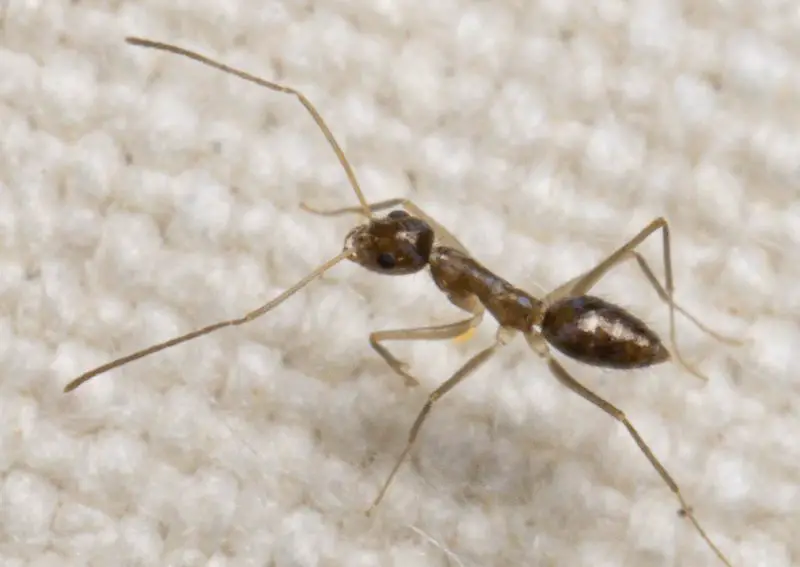
The Crazy Ant is easily recognized by its erratic, rapid movements and long legs. Workers are small, measuring around 2.2 to 3 millimeters long, with dark brown to black bodies and long antennae. Unlike many other ants, they move unpredictably, which gives them their “crazy” name. Their slender, elongated bodies and numerous fine hairs help distinguish them from similar species.
These ants prefer warm, humid environments and often nest in soil, under debris, in potted plants, or inside electrical equipment. Indoors, they are attracted to bathrooms, kitchens, and appliances, especially in damp areas. Colonies can grow large and contain multiple queens, making them difficult to control once established.
Crazy ants are not aggressive toward humans, but they can bite defensively when disturbed. Their bites are mild and non-venomous, causing only slight discomfort. However, they can become a serious nuisance because of their sheer numbers and tendency to invade homes in search of food and water.
While they pose little medical risk, Crazy ants can damage electrical wiring and devices by nesting inside circuits and switches. Their infestations require professional treatment, especially in warm or moist indoor environments. Keeping areas clean and dry is crucial to prevent colonies from spreading.
Little Black Ant (Monomorium minimum)
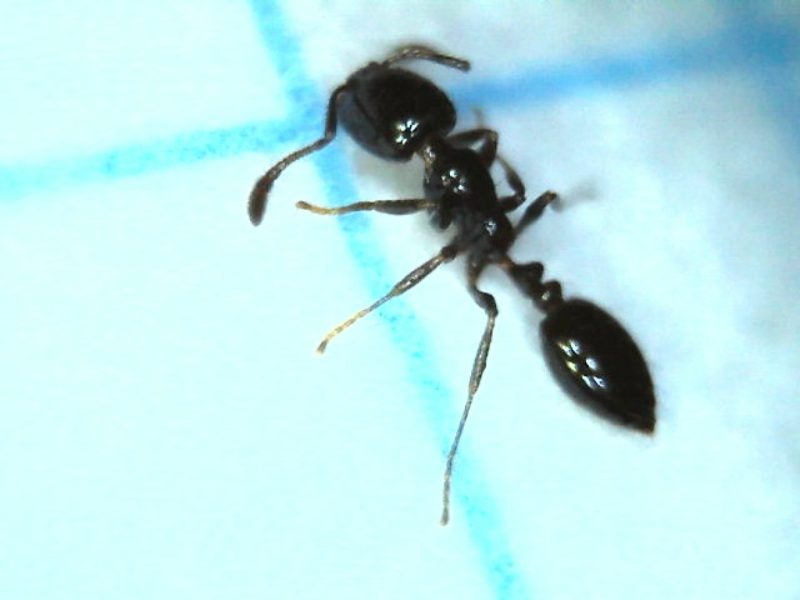
The Little Black Ant is a tiny, shiny, jet-black species commonly found throughout Iowa. Workers are only 1.5 to 2 millimeters long, making them one of the smallest household ants. Despite their small size, they are easy to spot due to their dark coloration and habit of forming long trails along walls, countertops, and baseboards.
These ants typically nest under rocks, logs, or pavement outdoors and inside wall voids, baseboards, or wooden structures indoors. They prefer warm areas with access to food and moisture. Colonies can contain multiple queens and thousands of workers, allowing them to expand quickly and reestablish after partial extermination.
Little Black Ants rarely bite, and their mandibles are too small to cause discomfort. They are scavengers that feed on sweets, grease, and other organic materials, often invading kitchens and pantries. Their foraging activity peaks during the summer when colonies are most active.
Though harmless to humans and pets, Little Black Ants are persistent indoor pests due to their small size and large colonies. Keeping food sealed and surfaces clean, along with using bait stations, helps manage infestations effectively.
Cornfield Ant (Lasius alienus)
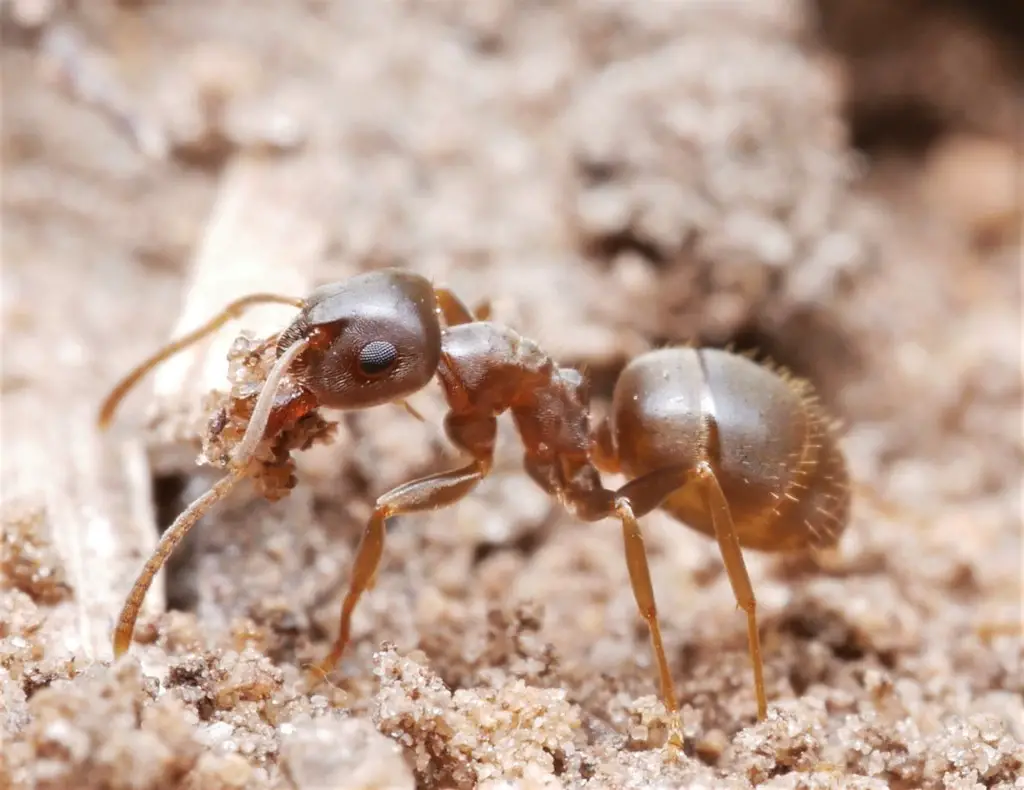
The Cornfield Ant is a common soil-dwelling species in Iowa’s grasslands, fields, and lawns. It measures about 3 to 4 millimeters in length and has a pale brown to dark brown body with a smooth, shiny surface. These ants are sometimes mistaken for Field ants but are smaller and less aggressive.
Cornfield ants prefer to build nests in soil, under stones, sidewalks, or in lawns. Their nests appear as small mounds of fine soil without large openings. They are rarely found indoors, preferring open areas exposed to sunlight. They feed on honeydew from aphids, small insects, and occasionally household crumbs when near structures.
These ants do not sting and rarely bite unless directly provoked. Their bites are mild and pose no risk to humans. They are considered beneficial insects outdoors because they help aerate the soil and control some pest species.
Cornfield ants do not have venom and are not dangerous, but they can occasionally invade homes searching for food. Their presence indoors is usually temporary. Regular lawn maintenance and removing aphid colonies can help keep them under control.
Fire Ant (Solenopsis invicta)
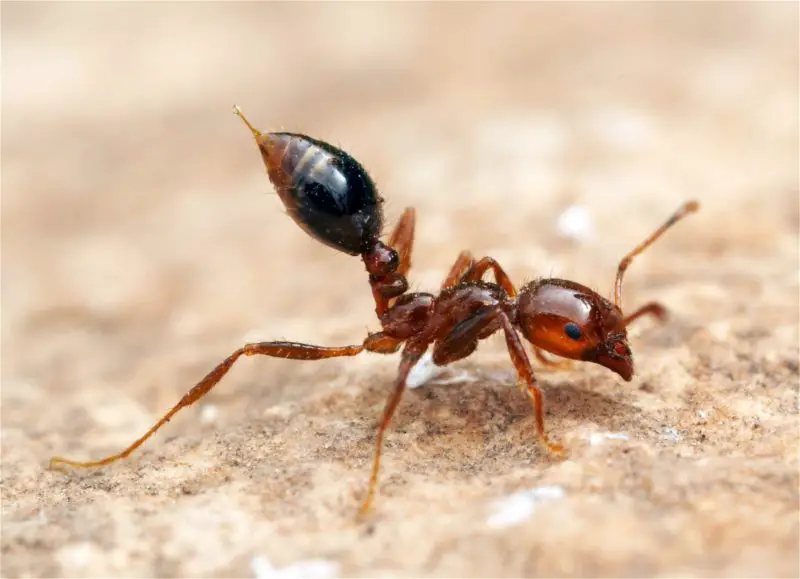
Fire Ants are known for their painful stings and aggressive behavior, though they are rarely found in Iowa due to the colder climate. Workers are reddish-brown with darker abdomens, measuring between 2 and 6 millimeters in length. They have strong mandibles and a venomous stinger at the end of their abdomen, which they use defensively.
These ants prefer warm, open areas such as fields, lawns, and roadsides. Their nests are dome-shaped mounds made of soil, sometimes reaching 30 cm high. Fire ants are highly territorial and will attack anything that disturbs their nest. Although they are uncommon in Iowa, isolated introductions may occur in warmer years or through transported soil.
Fire Ants are capable of both biting and stinging. They first bite to anchor themselves and then sting multiple times, injecting alkaloid venom. This causes immediate burning pain, followed by red pustules or allergic reactions in sensitive individuals. Multiple stings can be dangerous, particularly for those allergic to insect venom.
Their venom is medically significant, unlike other Iowa ants. While not native to the region, their potential spread northward due to warming temperatures remains a concern. Quick reporting and professional extermination are essential if suspected colonies are found in Iowa.
How to Prevent Ant Bites and Infestations in Iowa Homes
Keeping ants out of your Iowa home requires a combination of sanitation, exclusion, and regular maintenance. Ants are resourceful insects capable of entering through even the smallest cracks or openings in search of food, water, and shelter. Understanding their habits and taking preventive steps can help you stop infestations before they begin.
Sanitation and Food Storage
Cleanliness is the most important step in preventing ant infestations. Even a few crumbs or drops of sugar can attract hundreds of ants within hours. Always wipe countertops and floors after meals, and promptly clean spills, especially sugary liquids. Store pantry goods such as cereals, flour, and pet food in airtight containers to block access. Avoid leaving dirty dishes in the sink overnight, and empty garbage bins regularly to eliminate scent trails that ants follow.
In addition, pay attention to grease and oil residue around stovetops or garbage cans. Grease is a common attractant for Pavement ants and Thief ants, which prefer fatty foods. Regular deep cleaning in kitchen corners, under appliances, and behind refrigerators can drastically reduce your chances of invasion.
Moisture Control
Ants, particularly Carpenter ants and Odorous House ants, are drawn to moisture-rich environments. Leaky faucets, damp basements, and poor ventilation create ideal nesting conditions. Inspect plumbing lines, bathroom seals, and under-sink cabinets for moisture buildup. Using a dehumidifier in basements or crawl spaces can make these areas less hospitable to ants and other pests.
Outdoors, ensure gutters and downspouts drain properly to prevent water pooling near your foundation. Trim vegetation touching your home’s exterior, as branches and shrubs often serve as bridges for ants to enter through windows and siding gaps.
Sealing Entry Points
Ants gain entry through gaps around windows, doors, and utility lines. Regularly inspect your home’s foundation, siding, and vents for cracks or small openings. Seal these with silicone caulk or weather stripping to create a physical barrier against invaders. Window screens should fit tightly, and door sweeps can be installed to close gaps under entryways.
Landscaping adjustments also help — keeping mulch, wood piles, or debris away from the house reduces nesting opportunities near your foundation. Since Field ants and Cornfield ants often build mounds close to walls, maintaining a clear perimeter discourages them from approaching your home.
Natural and Chemical Control Options
If ants have already entered your home, consider starting with natural control methods. Spraying a mixture of vinegar and water (1:1 ratio) can disrupt ant scent trails and deter foraging. Diatomaceous earth, a non-toxic powder, can be sprinkled along baseboards and entry points to kill ants through dehydration. Essential oils like peppermint, tea tree, or citrus also repel certain species due to their strong scent.
For persistent infestations, especially from Carpenter or Crazy ants, bait stations and gel traps can be highly effective. These products contain slow-acting insecticides that workers carry back to the colony, targeting the nest over time. Always follow safety instructions and place baits in areas inaccessible to children and pets. When large colonies or structural infestations are involved, contacting a professional pest control service ensures complete and lasting removal.
FAQs About Biting Ants in Iowa
Are Fire Ants found in Iowa?
Fire Ants (Solenopsis invicta) are extremely rare in Iowa. The state’s cold winters prevent them from establishing long-term colonies outdoors. However, isolated reports occur when soil or plant materials are transported from southern states. These ants are dangerous due to their venomous stings, which can cause painful welts or allergic reactions. If you ever encounter aggressive reddish ants forming large dome-shaped mounds, report them to your local extension office or pest control specialist immediately.
Which Ant Bites Hurt the Most?
Among the ants in Iowa, Carpenter ants and Field ants deliver the most noticeable bites. Carpenter ants can pinch with their strong jaws, causing a brief stinging sensation, while Field ants inject formic acid into the bite, producing a mild burning feeling. Neither bite is medically serious, and the pain subsides quickly. Fire ant stings, though rare in Iowa, are significantly more painful and may form white pustules within hours.
Can Ants Damage Homes?
Yes, but primarily one species: the Carpenter ant. Unlike termites, Carpenter ants do not eat wood but excavate it to build tunnels for nesting. Over time, this can weaken wooden beams, window frames, and structural supports. Odorous House ants and Pavement ants may enter homes but cause only minor nuisance issues. Regular inspections of damp wood, especially in basements and attics, can help catch early signs of Carpenter ant activity before major damage occurs.
How Do I Know If I’m Allergic to Ant Bites?
Most people experience only mild irritation, redness, or swelling from ant bites. However, allergic reactions can occur, especially from venomous species like Fire ants. Warning signs include intense swelling, itching, dizziness, or difficulty breathing. If these symptoms appear, seek immediate medical attention. For mild cases, washing the area with soap and water, applying ice, and using an antihistamine or hydrocortisone cream can relieve discomfort.
What’s the Best Way to Get Rid of Ants Naturally?
Natural remedies can work well for small infestations. Vinegar, lemon juice, and peppermint oil sprays mask the chemical trails ants follow. A mixture of sugar and borax powder can serve as an effective homemade bait — the sugar attracts ants while the borax slowly eliminates them. Regular cleaning, sealing cracks, and keeping outdoor areas dry are key to preventing future invasions without harsh chemicals.
Why Do Ants Keep Coming Back After Treatment?
Ants are highly adaptive insects with multiple queens and satellite colonies. Killing a few workers won’t eliminate the nest, as the queens remain protected deep within walls or soil. If infestations return, it’s often because the main colony was not reached. Using bait systems that workers carry back to the nest is more effective than contact sprays. Professional pest management may be necessary for persistent or large colonies.
When Should I Call a Professional?
If you notice large numbers of ants indoors despite cleaning, or if you suspect Carpenter ants nesting in your walls or structural wood, it’s time to call a professional. Likewise, any sign of Fire ants — even a small mound — should be handled by licensed pest control. Professionals can accurately identify the species, locate hidden colonies, and apply targeted treatments that prevent re-infestation without overusing pesticides.

